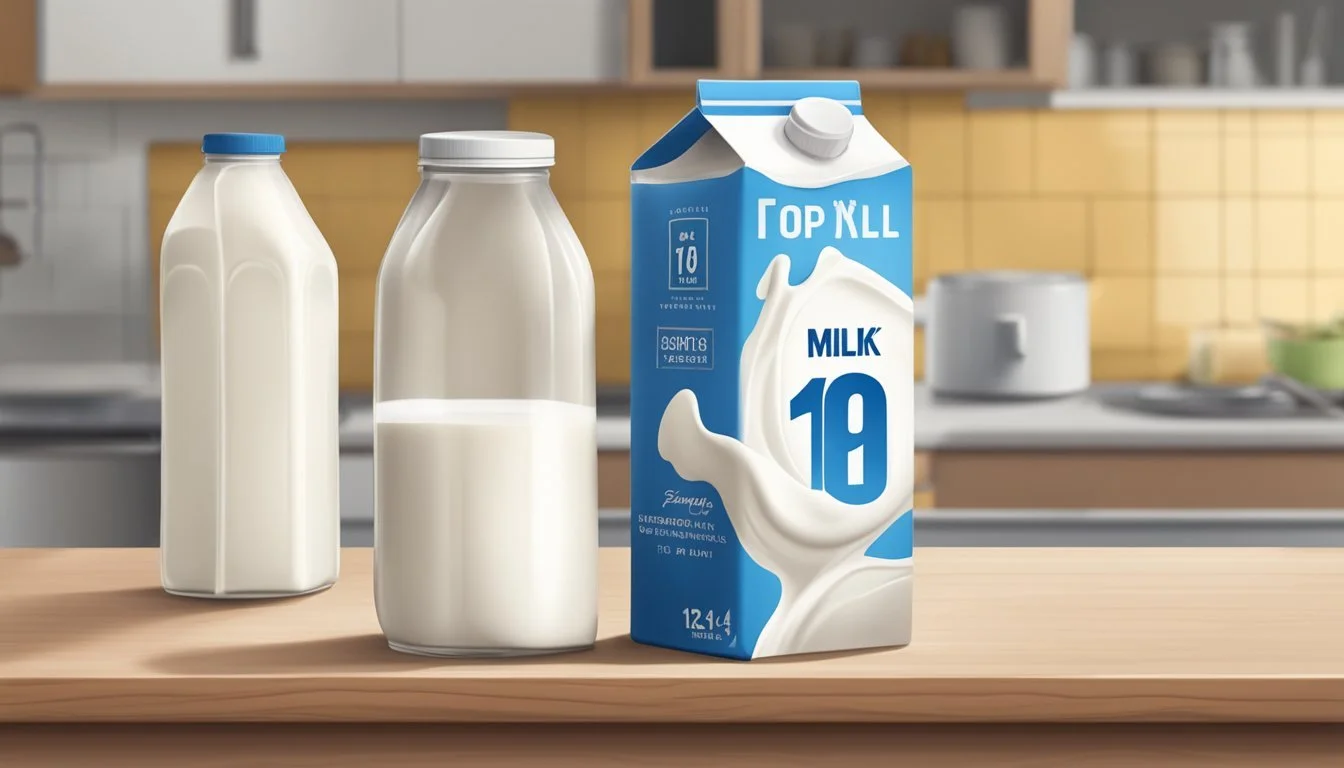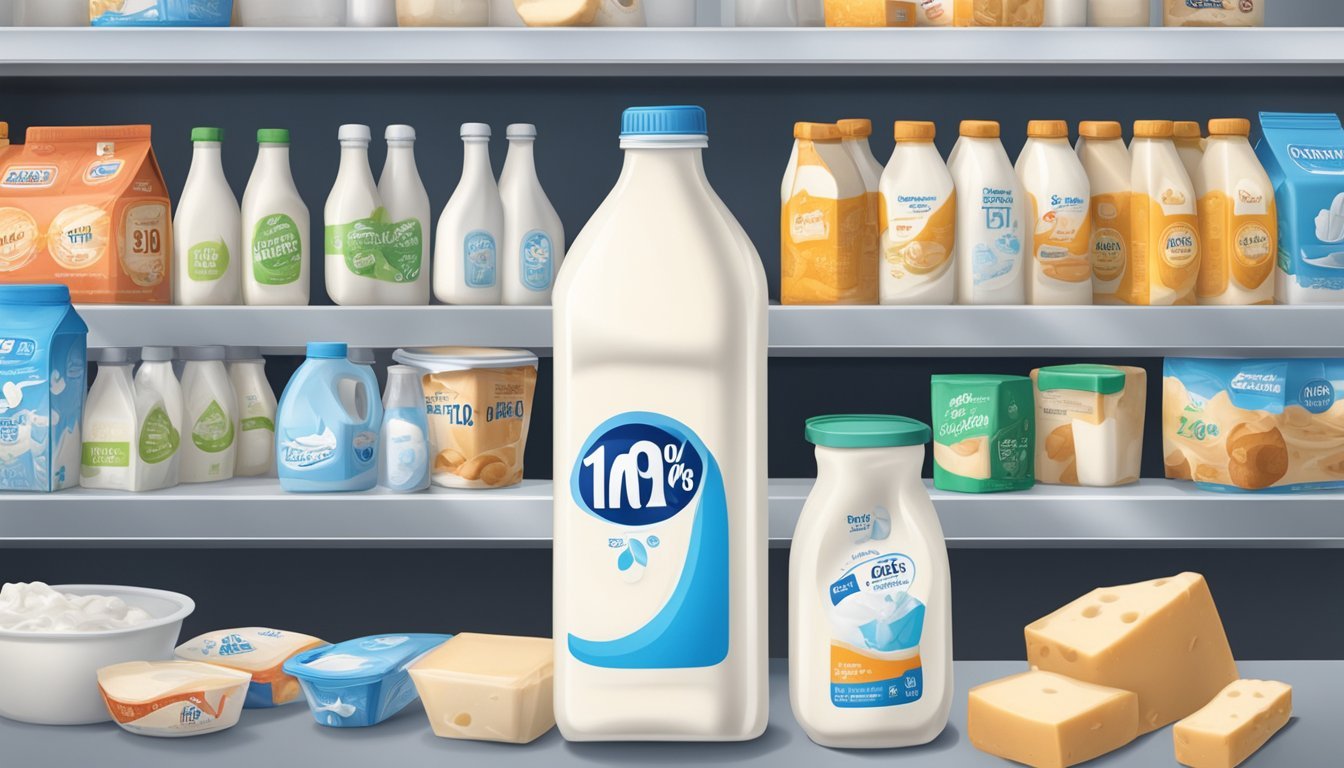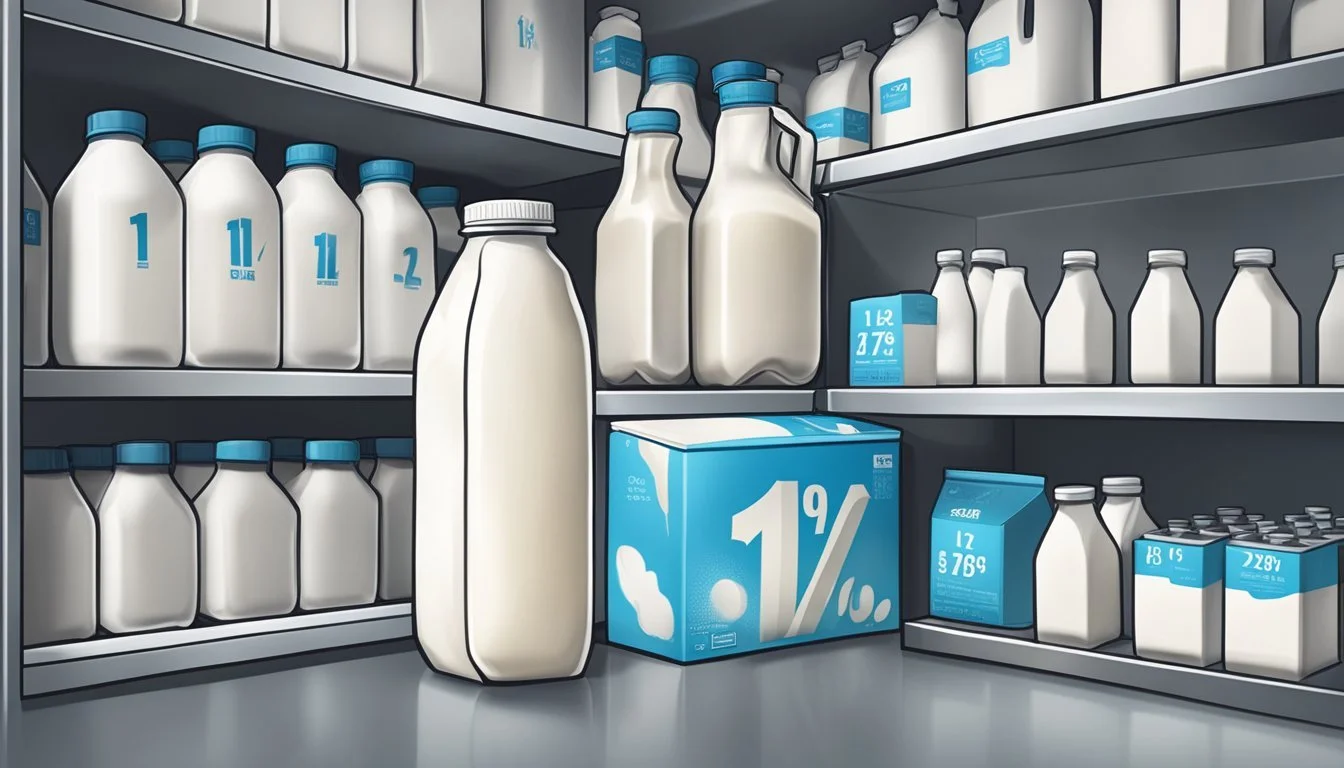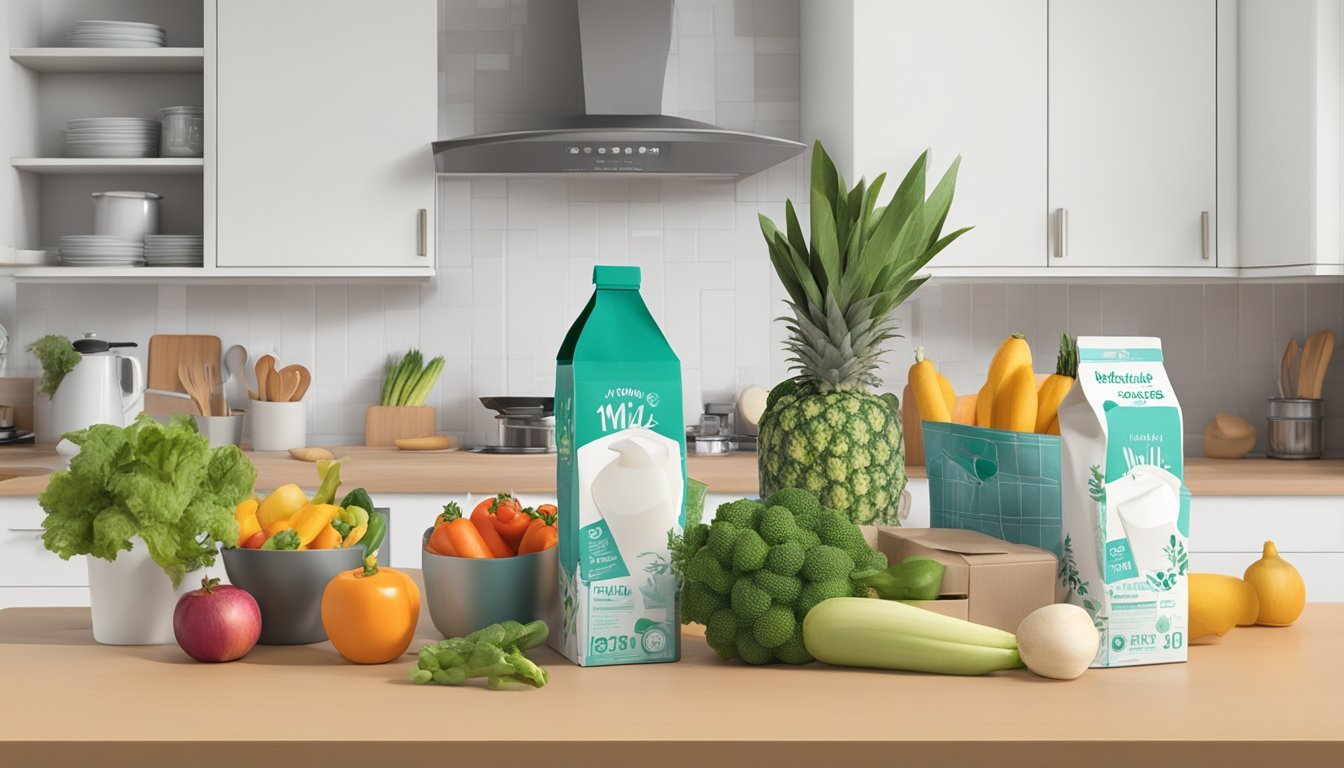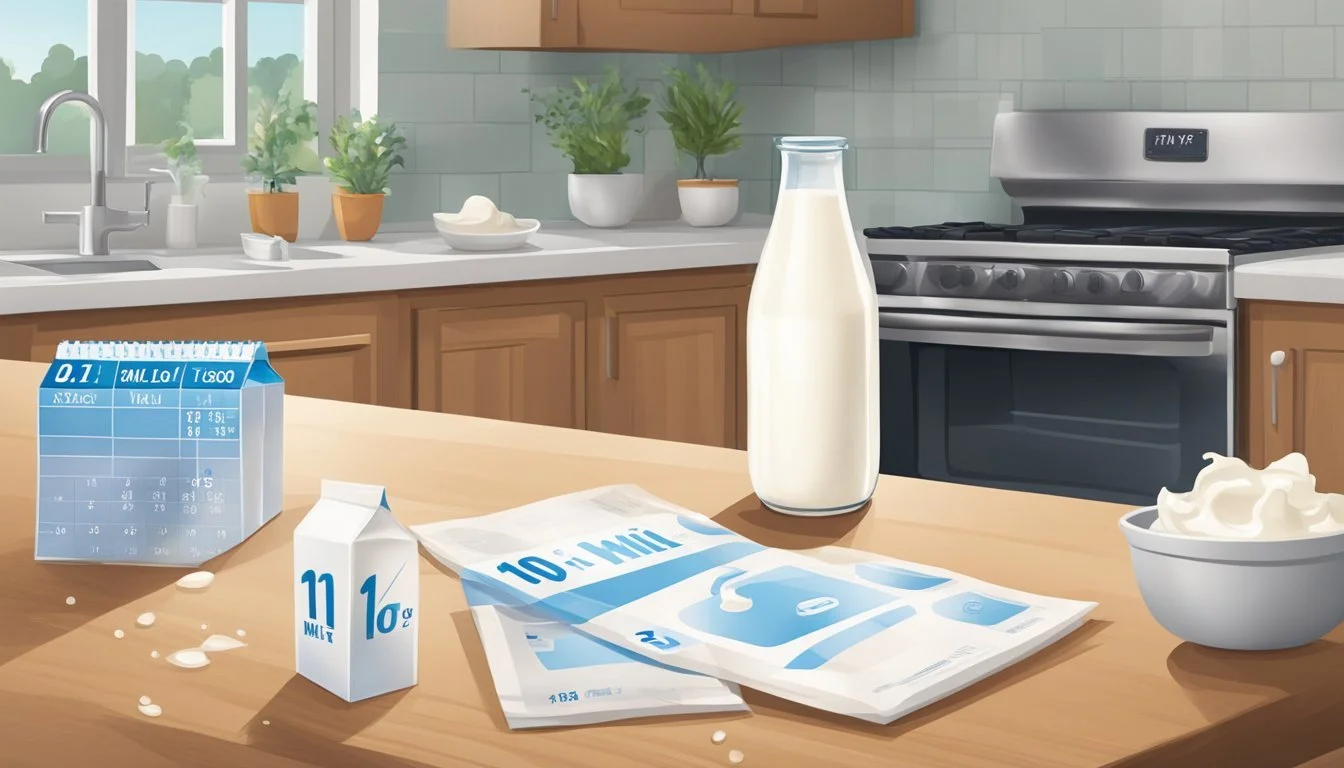How Long Does 1% Milk Last After Opening?
Shelf Life Explained
Milk is a staple in many refrigerators, but understanding its shelf life can be a bit tricky, particularly when it comes to 1% milk. This type of milk, which contains less fat than whole milk, is often chosen for its lower calorie content and slight creaminess that is less than that of 2% milk. The longevity of 1% milk can be influenced by a variety of factors including storage conditions, processing methods, and adherence to expiration dates.
Upon purchase, 1% milk typically comes with a sell-by or use-by date, which is a good initial indicator of how long it may last. Generally, if unopened and stored properly in the refrigerator at or below 40 degrees Fahrenheit, 1% milk can last 5-7 days past this date. It's important to note that once the milk is opened, the clock starts ticking, and it should ideally be consumed within seven days for optimum freshness and safety.
Proper handling is crucial to maximize freshness and minimize the risk of spoilage. It involves refrigerating the milk promptly after use, not leaving it out at room temperature for extended periods, and ensuring that the refrigerator's temperature is adequately cold. These practices help to maintain the quality of the milk and prevent the growth of bacteria that can lead to spoilage or foodborne illnesses.
Understanding 1% Milk
When discussing 1% milk, it's crucial to understand its composition, how it's processed, and how it differs from other types of milk. This section provides specific details on these aspects.
Definition and Composition
1% milk, commonly known as low-fat milk, is a dairy product containing approximately 1% milk fat by weight. The rest of its composition includes water, proteins, lactose, vitamins, and minerals. The reduced fat content changes the milk's texture, calorie count, and nutritional profile compared to higher-fat varieties.
Pasteurization Process
1% milk undergoes pasteurization, a heating process that kills harmful bacteria and extends the milk's shelf life. Pasteurized milk is rapidly heated and then quickly cooled. Homogenization follows, which is a mechanical process that evenly distributes the milk fat throughout the liquid, preventing it from separating and floating to the top.
Skim vs. 1% vs. 2% vs. Whole Milk
Each type of milk is differentiated primarily by its milk fat content:
Skim Milk: Less than 0.5% milk fat
1% Milk: Approximately 1% milk fat
2% Milk: Approximately 2% milk fat
Whole Milk: Around 3.25% milk fat
Skim milk has the least amount of calories and fat, while whole milk contains the most. It is essential to note that while the fat content varies, most milk types are fortified with vitamins A and D, ensuring that even lower-fat options like 1% milk still contribute to a nutritious diet.
Shelf Life and Storage
Understanding the shelf life and optimal storage conditions of 1% milk helps maintain its quality and freshness. The section below provides detailed information on preserving milk’s flavor, texture, and safety.
Proper Refrigeration Techniques
1% milk should be stored in a refrigerator at a temperature around 38°F (3°C) to maintain optimal freshness. It is essential to keep the refrigerator at a consistent temperature and to place the milk container away from the door where temperature fluctuations are most notable. Factors such as light and heat can degrade the quality of milk, so storing it in the colder parts of the refrigerator can help extend its shelf life.
Determining Freshness
The freshness of 1% milk can be determined by inspecting its smell, flavor, and texture. Fresh milk typically has a mild, sweet aroma, a clean taste, and a smooth, consistent texture without any lumps. If the milk presents a sour smell, off-flavor, or curdling texture, it indicates that it's no longer fresh and should not be consumed.
Expiration vs. Sell-by Dates
There is often confusion between sell by, use by, and expiration dates. For 1% milk, the sell-by date is the store’s indicator for how long to display the product for sale. The milk can still be consumed for up to a week past this date if it has been properly refrigerated. The use by or expiration date is a more direct measure of when the milk may begin to decrease in quality. Milk stored correctly that has surpassed its sell-by date, but not its expiration date, should still be checked for signs of spoilage before use.
Identifying Spoilage
When identifying spoiled 1% milk, one should focus on sensory changes and understand the health implications of ingesting such milk. Spoiled milk can host bacteria that are responsible for foodborne illnesses.
Sensory Indicators of Spoiled Milk
One can detect spoilage in milk using their senses. Key signs include:
Smell: Spoiled milk often emits a sour smell that is distinctly recognizable.
Appearance: Look out for any discoloration or curdling of the milk, which might appear as chunks.
Taste: Although it's not advised to taste milk that shows other signs of spoilage, sour milk will have an off taste.
Health Risks of Consuming Spoiled Milk
Consuming spoiled milk poses several health risks due to potentially present pathogens such as listeria and salmonella. Symptoms of foodborne illness stemming from spoiled milk can include:
Diarrhea
Vomiting
These symptoms are indicative of the body's response to harmful bacteria found in spoiled milk. It is crucial to avoid consumption of milk if spoilage is suspected to prevent these adverse health effects.
Preserving Milk Quality
To maintain the quality of 1% milk, proper storage practices must be strictly followed. These practices are pivotal in ensuring the milk's freshness and safety for consumption.
Effects of Temperature Changes
Temperature fluctuations can significantly impact the quality of 1% milk. It is imperative to store milk at a consistent temperature, typically in the refrigeration range of 32°F to 40°F (0°C to 4°C), to preserve its quality. Milk should be placed at the back of the refrigerator where temperature variations are minimized. Avoid storing milk in the refrigerator door, as the temperature here can change with frequent opening and closing, leading to more rapid degradation of the milk.
Freezing and Thawing 1% Milk
Freezing 1% milk extends its shelf life but may alter the milk's texture and consistency. If one chooses to freeze milk, it should be done before the sell-by date, in an airtight container, to protect it from absorbing other flavors and odors. Allow space at the top of the container, as milk will expand when it freezes. To thaw frozen milk, transfer it to the refrigerator and allow it to slowly defrost. Once thawed, the milk should be consumed within 2-3 days and should be well shaken before use to help redistribute any separated components. It is not recommended to refreeze thawed milk, as this will further diminish the milk's quality.
Safety and Recommendations
When discussing 1% milk, which the Food and Drug Administration (FDA) classifies as low-fat milk, it's crucial to understand and follow guidelines for safe consumption to minimize health risks associated with dairy spoilage.
FDA Guidelines for Dairy Products
The FDA sets standards for the labeling and safety of dairy products, including 1% milk. These guidelines help consumers understand the nutritional content and the shelf life of milk. Important aspects of these guidelines include:
The "best if used by" date indicates when a dairy product is at peak quality.
Labels must clarify fat content, with 1% milk designated as low-fat.
For infant formula, the guidelines are particularly stringent due to the health sensitivities of infants. The FDA mandates clear expiration dates for these products, and it's critical not to use them beyond these dates.
Storage Recommendations:
Keep milk refrigerated at 40°F (4°C) or below.
Store milk away from the door to avoid temperature fluctuations.
Consuming After Expiration Dates
While 1% milk is generally pasteurized to kill bacteria and extend its shelf life, consumers should be cautious when consuming milk after expiration dates, which can be split into "sell-by," "use-by," and "best if used by":
Sell-by: the date by which the store should sell the product.
Use-by: the last date recommended for peak quality.
Best if used by: suggests when the product should be consumed for best flavor or quality. It is not a safety date.
Post expiration consumption should be based on sensory observation. Milk that smells off, has a sour taste, or appears curdled should not be consumed. While it may be safe to drink milk a few days past the "best if used by" date, any signs of spoilage indicate that the milk should be discarded to avoid foodborne illness.
Impact on Environment and Economy
Milk preservation, especially 1% milk, intertwines closely with environmental sustainability and the economic framework of food distribution. The longevity of milk affects both waste management and the resources required for production and distribution.
Reducing Milk Waste
Refrigeration is key in extending the shelf-life of 1% milk, thereby minimizing food waste. Proper refrigeration not only preserves milk but also conserves the resources invested in its production. Households and retailers play a critical role in ensuring that milk is stored correctly to avoid spoilage. They are encouraged to:
Keep milk at or below 40°F (4°C) to maximize freshness.
Rotate stocks to use older milk first.
Milk Production and Distribution
The process of producing and distributing milk involves considerable environmental and economic impacts. Producers in the United States focus on efficiency to reduce the environmental footprint. The industry has made strides in reducing resource use:
Water consumption has decreased by 30%.
Land use has diminished by 21%.
In the realm of distribution, transporting milk from farms to stores involves a network of refrigerated transport to maintain quality. The environment benefits when the distance from farm to store is reduced, which not only cuts emissions but can also improve the milk's freshness and long-term viability.
Alternatives to 1% Milk
When seeking an alternative to 1% milk, consumers have the option to switch to non-dairy substitutes or opt for differently processed dairy products like ultra-pasteurized and aseptic milks.
Non-Dairy Substitutes
Non-dairy substitutes cater to a range of dietary preferences and needs, including vegan and lactose-intolerant diets. These substitutes are often made from plants and include soy, almond, rice, and cashew milk. Each offers a unique nutritional profile, with soy milk being rich in protein and cashew milk providing vitamin E. Non-dairy substitutes have varying levels of fat content, with some being labeled as fat-free, much like their dairy counterparts.
Soy Milk: Often chosen for its protein content
Almond Milk: Known for its low calorie count
Rice Milk: Generally the most hypoallergenic option
Cashew Milk: Offers a creamy taste with vitamin E
Ultra-Pasteurized and Aseptic Milks
Moving to ultra-pasteurized and aseptic milks, consumers will find products that have undergone high-temperature processing to extend shelf life. Ultra-pasteurized milk is heated beyond the standard pasteurization temperatures, making it shelf-stable for longer periods before opening. Aseptic milk refers to both the ultra-pasteurization process and the sterile packaging that allows the milk to last for months unrefrigerated if unopened. This category can include full-fat, reduced-fat, and fat-free options.
Ultra-Pasteurized Milk: Longer shelf life, available in various fat contents
Aseptic Milk: Can last 30 to 90 days when stored properly and unopened

